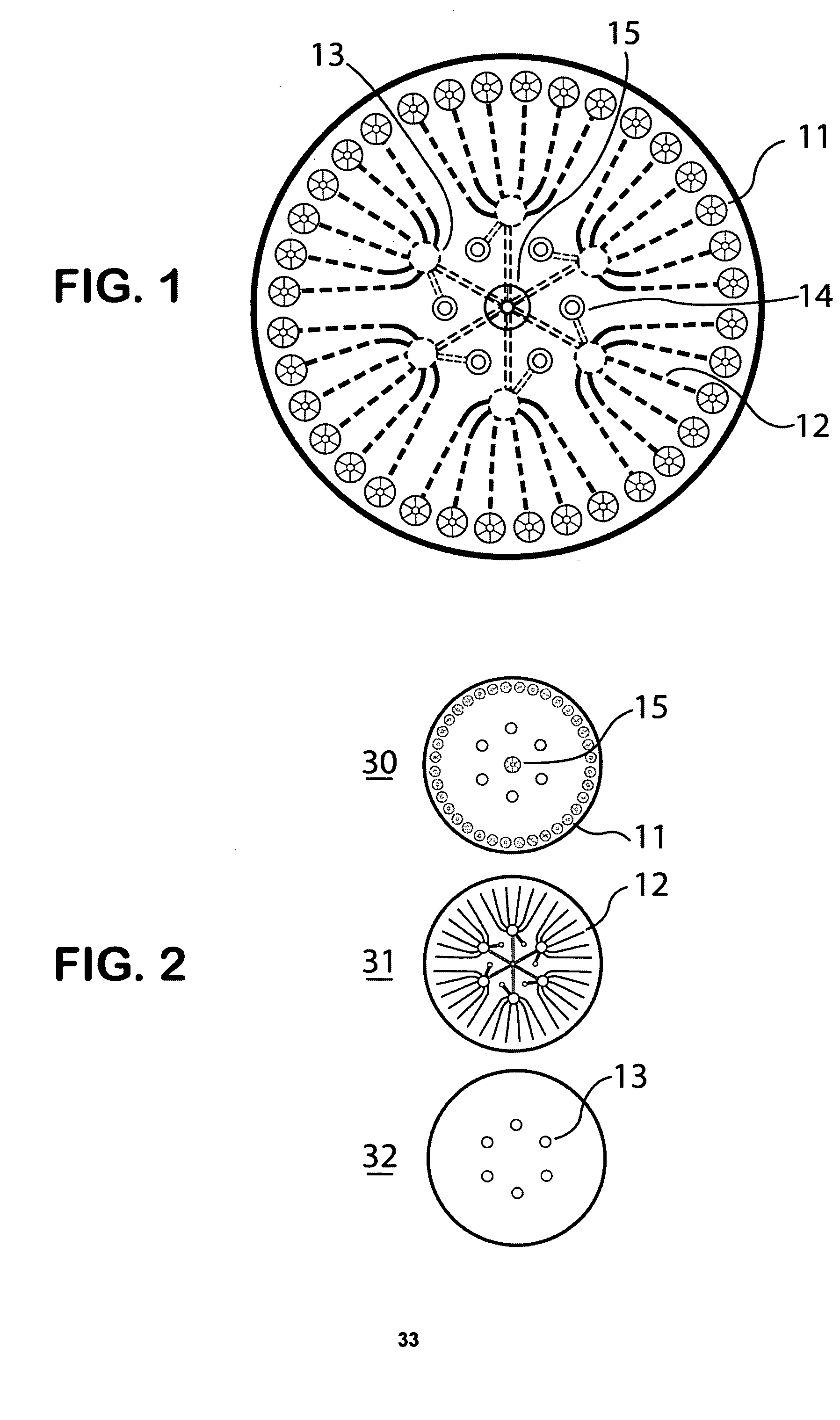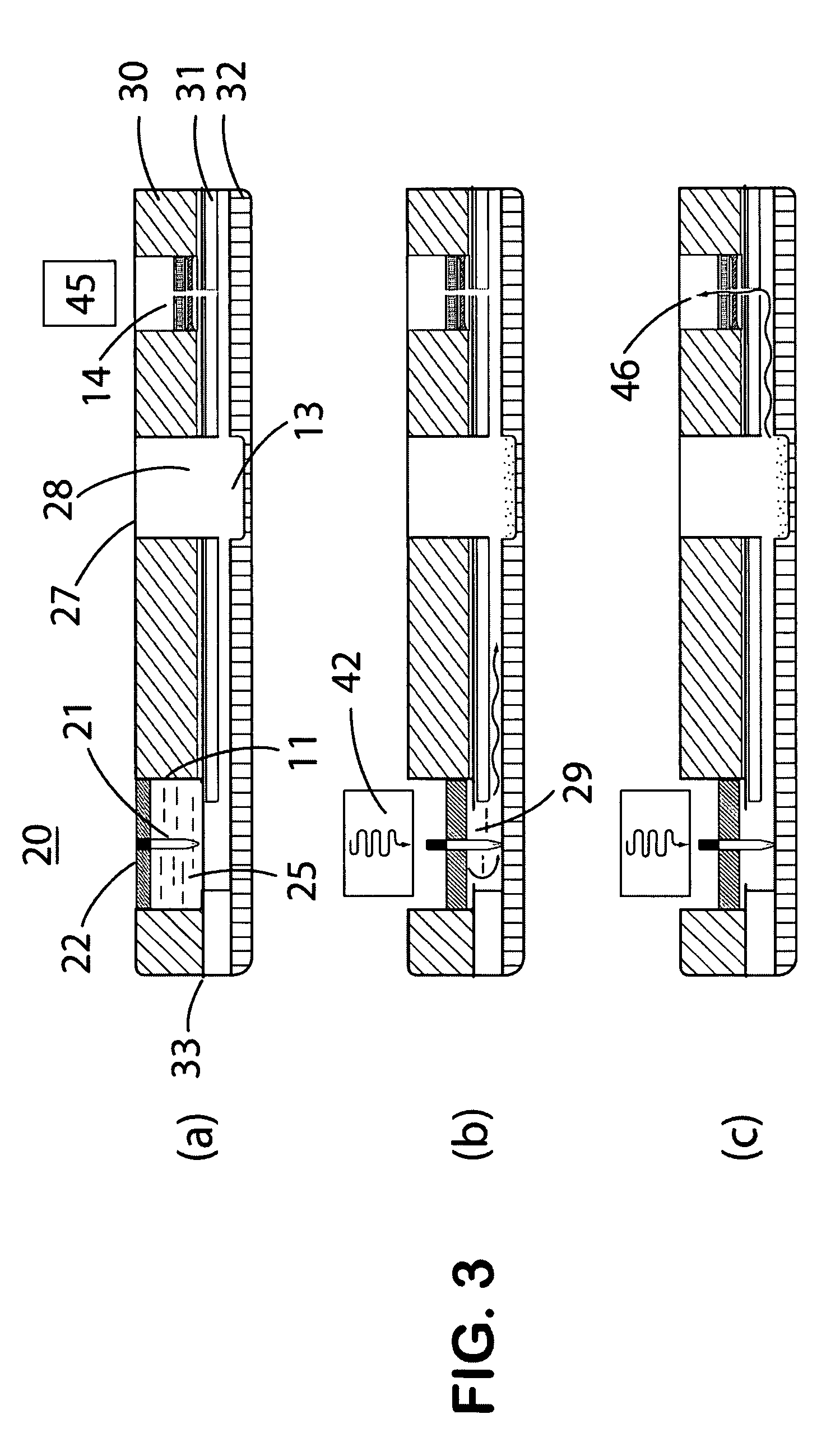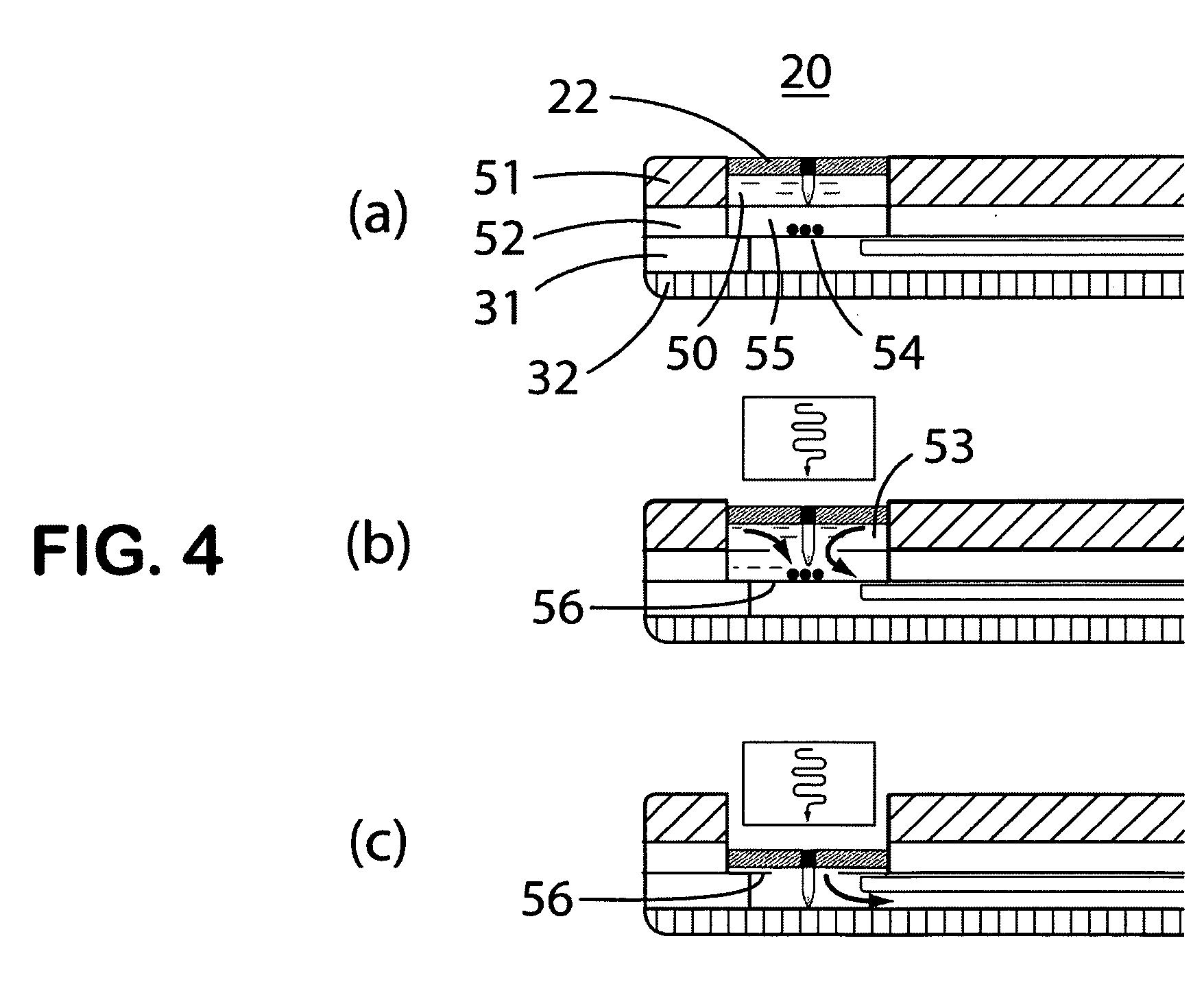Self-contained microfluidic biochip and apparatus
a microfluidic biochip and microfluidic technology, applied in biochemistry apparatus and processes, fluid controllers, laboratory glassware, etc., can solve the problems of multiple reagent delivery, poor sensitivity and reliability of all commercially available point of care testing analyzers, and problems in closed confinement. achieve the effect of convenient implementation
- Summary
- Abstract
- Description
- Claims
- Application Information
AI Technical Summary
Benefits of technology
Problems solved by technology
Method used
Image
Examples
example no.1
EXAMPLE NO. 1
[0071] The system as shown in FIG. 7 is designed and configured to simultaneously synthesize and label probes from two samples and hybridize the two probes to an integrated array of 400 spotted DNA elements. These elements would represent 400 well characterized unique genes and are selected so that according to preliminary data (FIG. 10), ⅔ of the genes are known to be highly expressed between normal human kidney (Asterand, Detroit, Mich.) and the Universal Human Reference RNA™ (Stratagene, La Jolla, Calif.). While ⅓ are known to show a low to no differential expression (between 0.5- and 1.5-fold) between the two specimens. The expression profiles have been generated using the Agilent Human 1A Oligo Microarray™ (22K array) and the Agilent platform for probe synthesis, hybridization and scanning. The slight bias of the data points towards the Reference RNA is caused by the fact that the Universal RNA is a pool of total RNAs of 10 different human tissues. Thus for the maj...
example no.2
EXAMPLE NO. 2
[0073] cDNA Synthesis & Amplification: cDNA synthesis includes three different reaction steps: (A) a reverse transcription (RT) step; (B) the formation of double-stranded cDNA step; and (C) the isothermal amplification (IA) step. In the RT, the mRNA (poly A+) portion within the total RNA is transcribed into single-stranded cDNA using a chimeric RNA-DNA primer. The primer binds with its DNA part to the poly(A) tail of the mRNA but the RNA part stays single-stranded. In this way the resulting RNA-cDNA complex has a unique RNA target sequence at the 5′ end of the cDNA. After fragmentation of the RNA in the RNA-cDNA complex, DNA polymerase is used to synthesize a second strand including DNA complementary to the unique 5′ RNA sequence of the first strand. The result is a double-stranded cDNA with a unique RNA / DNA heteroduplex at the 5′ end. In the IA part of the unique 5′ RNA sequence is removed by added RNase H. The exposed cDNA sequence is then available for binding a seco...
example no.3
EXAMPLE NO. 3
[0074] Fluorescent Dye Coupling: The fluorescence labeling of the cDNA is achieved in a simple chemical by coupling of NHS-ester cyanine 3 (Cy3) or cyanine 5 (Cy5) to aminoallyl groups of the cDNA. The uncoupled dye is removed by purification with magnetic beads process (Dynal).
PUM
| Property | Measurement | Unit |
|---|---|---|
| Length | aaaaa | aaaaa |
| Length | aaaaa | aaaaa |
| Length | aaaaa | aaaaa |
Abstract
Description
Claims
Application Information
 Login to view more
Login to view more - R&D Engineer
- R&D Manager
- IP Professional
- Industry Leading Data Capabilities
- Powerful AI technology
- Patent DNA Extraction
Browse by: Latest US Patents, China's latest patents, Technical Efficacy Thesaurus, Application Domain, Technology Topic.
© 2024 PatSnap. All rights reserved.Legal|Privacy policy|Modern Slavery Act Transparency Statement|Sitemap



